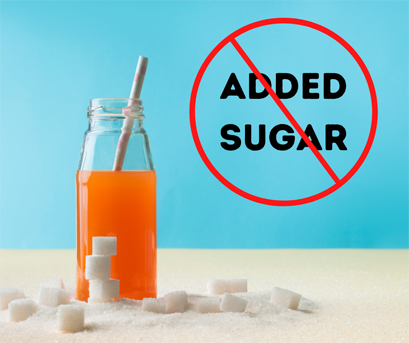Pay attention to added sugar
February 18, 2021
Sugar. It’s everywhere. You’ll not only find sugar in places you would expect – like cookies and candy – but it’s hiding in places you might not think of, like yogurt, ketchup, bread, soup, and processed foods that don’t even taste sweet.
Added sugar contributes excess calories to your diet with no nutritional value. It causes inflammation in the body and may contribute to weight gain, diabetes, heart disease, metabolic syndrome, and tooth decay, as well as other health problems.
According to the CDC, 42% of the average American’s daily sugar intake comes from sugary beverages such as soda, energy drinks, or sports drinks. Swapping one of these sugary drinks a day for a glass of water could really make a difference in your health.
Naturally occurring sugars in foods like fruits, vegetables, and many dairy products do serve a purpose. These foods are providing other beneficial nutrients such as fiber, antioxidants, protein, calcium & other essential minerals. Since your body digests these foods slowly, the sugar in them offers a steady supply of energy to your cells.
MLHS Diabetes Education Program Educator, Deanna Duret shares some advice on reading labels. “When reading food labels check the grams of total carbohydrate. This is the total amount of starches, natural and added sugars, sugar alcohols, and dietary fiber in food. Choose foods that are lower in added sugars. Total sugars include sugars that are naturally in foods (such as fruit and dairy products) and sugars that are added to foods. Added sugars tell you how much of the total carbohydrate amount comes from sugars added to the food. Every 4 grams of sugar is equal to 1 teaspoon. The ingredient list provides information about the types of sugars added to food.”
A good rule of thumb is to avoid products that list “sugar” as the first or second ingredient. There are over 60 names for sugar, from corn syrup, agave nectar, and honey to fructose, dextrose and maltose, so it can be difficult to spot added sugar just by reading the ingredient list. New food labels now include the amount of added sugar in addition to total sugar. Different brands of the same foods often have different amounts of added sugar so look closely. Better yet, eat whole foods instead of processed foods whenever possible and you won't have to worry about how much sugar is hiding in your food.
